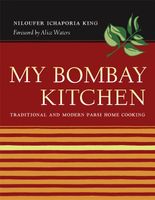Advertisement
Preparation info
- Serves
4 to 6
. - Difficulty
Complex
Appears in
Published 2007
Throughout the sphere of Persian Arab influence, including northern India, a kebab or kofta can be meat or fish, ground or in chunks, shaped, impaled or not, and either fried, stewed, or grilled. For Parsis, the Gujarati word kavab signifies a mixture of meat, fish, or vegetable shaped and then stewed, fried, or cooked on a griddle. In Bombay, the meat of choice is usually lean kid; my preference is for chicken or turkey. Supermarket ground lamb can be too fatty for Parsi tast


